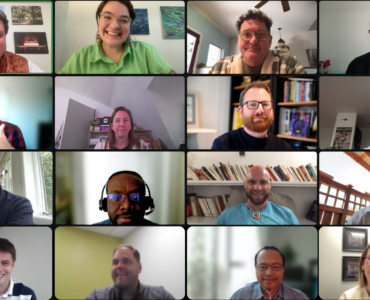Offsite Meetings x The Future of Work

Remember the pre-COVID era, when offsite meetings were a novel way to help teams get away from the daily grind? Offsite meetings were the rallying cry for leadership teams to pull together to define strategy, build excitement for a major announcement, or grow camaraderie in the face of shared challenges ahead. Sometimes the meetings were mere blocks away from “the office” at a place free from distractions, and other times they were a “fly in” at some more desirable destination.
In the Future of Work, offsite meetings have a new backdrop. Teams are increasingly moving away from large dedicated office leases, and moving towards distributed coworking spaces to enable hybrid work. As that transition continues to accelerate, the trend towards offsite meetings has accelerated as well, but with a twist. More on that in a bit.
The “Why” of Offsite Meetings
In years past, what made offsite meetings appealing relative to getting together in the “big conference room” at headquarters? Three things:
- Distraction Free Zone: stepping away to an offsite location implied a certain expectation of keeping normal operating responsibilities at arms length for the day, making room for focused and engaged discussion of the higher-level topics at hand.
- Shared Commitment: getting together in-person with all stakeholders meant that decisive action and commitments could be settled with a feeling of finality. And preferably, with shared excitement for the opportunities ahead.
- The Human Factor: an “offsite” implied human presence. Not a dial-in. Not a zoom. Not a time to send in a second-in-command instead of attending personally. A time to sit elbow-to-elbow with colleagues and nurture relationships while working through topics of great strategic importance.
Granted, it was easier to orchestrate offsite meetings when most of the team was already going to be in the same office anyway, where a “redirect” to a nearby event venue was only a trivial logistical change. So, how do offsite meetings hold up now that the world of work has shifted more towards hybrid and distributed teams?
The Rise of Offsite Meetings
Now that many companies are geographically distributed, a distraction-free zone is hard (impossible?) to come by, via Zoom. Everyone has their own unique work environment, surrounded by their own work (and non-work) distractions. Many distractions are easily reachable simultaneous to having Zoom open and their camera turned on.
Moreover, 73% of employees that work from home, miss socializing with their colleagues in-person (source: Indeed). Pair that with the insight that in-person requests are 34 times more effective than email-based requests (source: Western University study). With this in mind, it makes good sense that offsite meetings are on the rise. The availability of convenient offsite meeting locations has helped as well.
Offsite Meetings in The Future of Work
If offsite meetings are here to stay, who organizes them? Who organizes flights, dinner reservations, a social outing, and all of the logistical details that give everyone the chance to just focus on being “fully present” in the scarce time that the team has together?
In larger companies, the work might fall to a combination of travel coordinators and administrative staff, but in smaller companies the answer is less clear. A trend we’re watching in our Future of Work Accelerator and our venture fund, is around a set of early stage companies bringing purpose-built solutions to market to manage every detail of offsite meeting preparation and execution. In the future of work, we’d expect most companies to lean on purpose-built solutions that organize offsite meetings across all logistical dimensions including:
- Availability: coordination of schedules to identify the best date, time, and city for the meeting
- Agenda Planning: collaborative planning of key topics, participants, and facilitators
- Travel Booking: personalized travel planning for each participant (66% of offsites involve air travel for at least one participant)
- Venue Selection: the process of shortlisting locations for dinners, social outings, and the “meeting” part of the meeting — and making final selections
- Post-Offsite Surveys: gathering of feedback as an input into what could be improved next time
For companies small enough to not have an administrative staff to lean on, we anticipate that all of the above (and more) will be well-served by purpose-built solutions that have begun to serve the growing “offsite meeting” market. Many of the best are from emerging startups that truly understand the customer needs and are eager to please.


